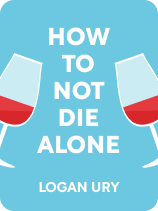

This article is an excerpt from the Shortform book guide to "How to Not Die Alone" by Logan Ury. Shortform has the world's best summaries and analyses of books you should be reading.
Like this article? Sign up for a free trial here.
Are you a dating “maximizer”? How does maximizing prevent you from finding the right partner?
According to dating coach Logan Ury, maximizers are people who go to great lengths to make sure they’ve found the right person. They want their partner to tick all the boxes, looking for perfect compatibility and refusing to settle for less.
Here’s why maximizers struggle to find love, according to Ury.
How Maximizers Behave
According to Logan Ury, maximizers want to be 100% sure they’ve made the right decision—so they do as much research as possible before choosing anything.
Unfortunately, Ury explains, maximizing often leads to unhappiness—mainly because it causes so much stress. You’ll date several people but struggle to commit to someone because you’re worried about missing out on someone better. And even if you do commit, you’ll torture yourself wondering if you made the right decision.
What to do instead: Ury recommends that maximizers learn to “satisfice: ” Find and commit to someone who meets your standards, even if they aren’t perfect. Doing so will make you happier for two main reasons: First, you’ll mitigate the stress of maximizing during the selection process because you’ll have clear standards by which to evaluate your choices. Second, by fully committing to your partner, you’ll avoid the stress of wondering whether you made the right choice after you’ve already selected someone because of a neurological phenomenon known as rationalization: If you finalize a decision (like selecting a partner), your brain will convince you that you’ve made the right choice.
| Understanding Satisficers and How to Become One Satisficing may sound simply like settling. But “settling” for a less-than-perfect option implies that a perfect option exists. In contrast, the 1956 paper that first described satisficing emphasized that it was a decision-making strategy used exclusively when making the objectively “best” decision is either impossible or unfeasible—as it is when dating. So if satisficing is the better option, as Ury says, how do you develop the standards by which to select your partner? In Act Like a Lady, Think Like a Man, Steve Harvey recommends that you ask yourself several questions on topics like relationship expectations and your partner’s career. If the other person doesn’t meet these standards, you should break things off (or not date them at all). That said, satisficing at one stage doesn’t guarantee you won’t agonize at later stages. Ury argues that rationalization convinces you that things you’ve already committed to are good choices. But in relationships, there are stages of commitment. So even if you satisfice and choose to date one person long-term, your desire to maximize might return when you start discussing marriage. To avoid this situation, Professor Barry Schwartz recommends regularly practicing gratitude for your partner. In The Paradox of Choice, he explains that reflecting on things you’re grateful for about your decisions (like your partner) can improve your happiness and let you avoid growing preoccupied with imagined alternatives (that might lead you to want to maximize again). |
To satisfice effectively when dating, Ury recommends using an algorithm: Explore without committing for the first 37% of your dating life, then commit to the next top pick you see.
To do so, first find your Exploration Limit Age: [(Age You Want to Get Married – Age You Started Dating) x .37] + (Age You Started Dating). For example, if you want to get married at 28 and you started dating at 18, your exploration limit age would be 21.7. Once you reach your exploration limit age, review your partners and determine which partner you liked the best. (If you’ve already passed that age, review the partners you dated before you reached that age.) Commit to the next person you date whom you like better than your favorite ex-partner.
By following this formula, Ury explains, you’ll date enough people to know what kind of partner you want—but you won’t date so long that you miss out on all the good potential partners before they leave the dating pool.
(Shortform note: In an ideal world, the 37% algorithm would guarantee that you learned what you like in a partner and committed to the best possible partner before every good possibility left the dating pool. In reality, experts point out that dating according to the 37% algorithm has two major risks. First, you might luck out and have an amazing first partner, but if you followed the algorithm, you’d reject them anyway. Second, you might have a string of terrible early partners—leading you to commit to a mediocre partner who’s better than the people you’ve dated but is a poor candidate when compared to the rest of the dating pool.)

———End of Preview———
Like what you just read? Read the rest of the world's best book summary and analysis of Logan Ury's "How to Not Die Alone" at Shortform.
Here's what you'll find in our full How to Not Die Alone summary:
- A science-backed approach for finding the true love you’ve always wanted
- How your patterns may be sabotaging your quest for true love
- How to effectively navigate the twists and turns of a relationship






